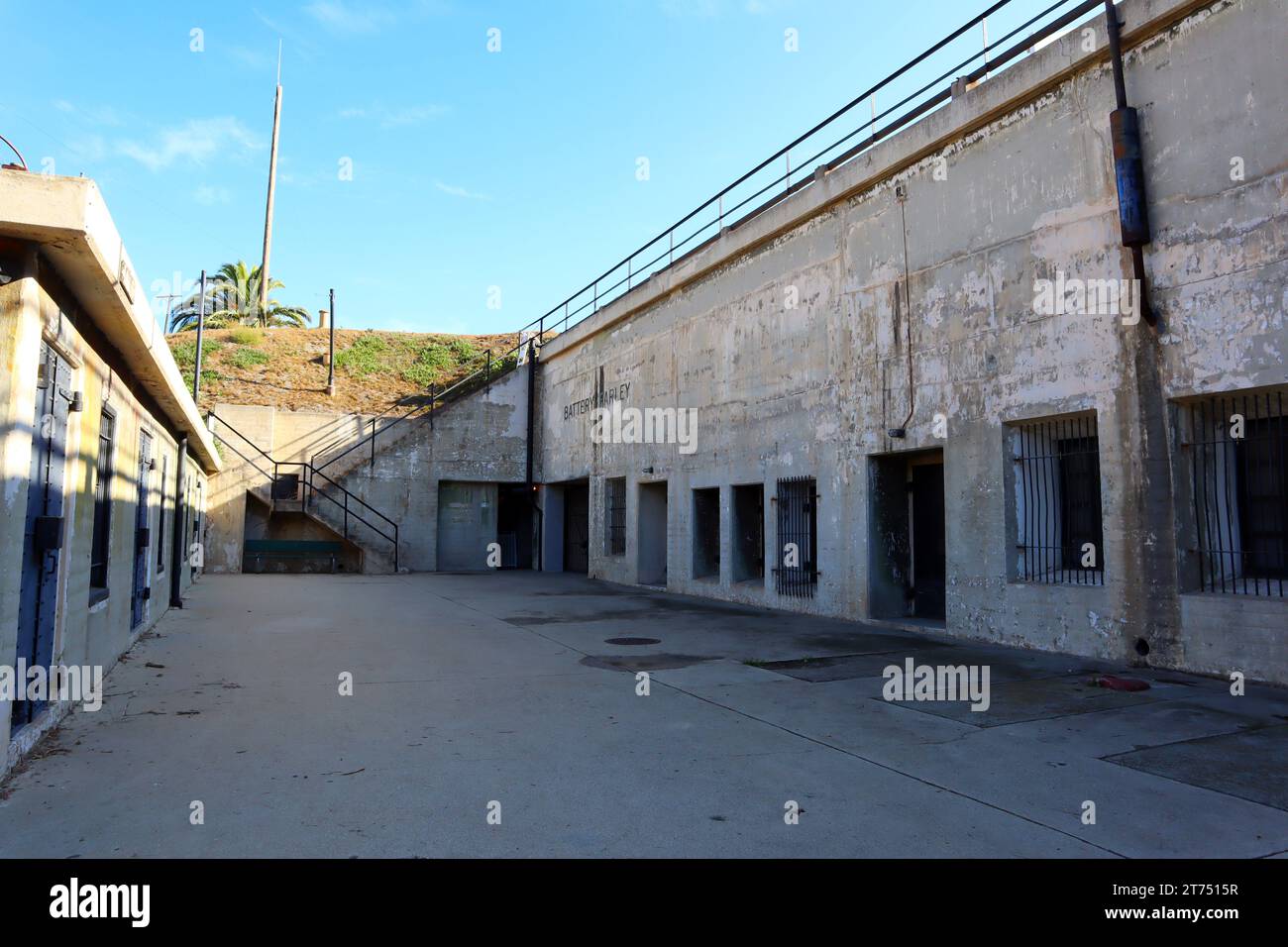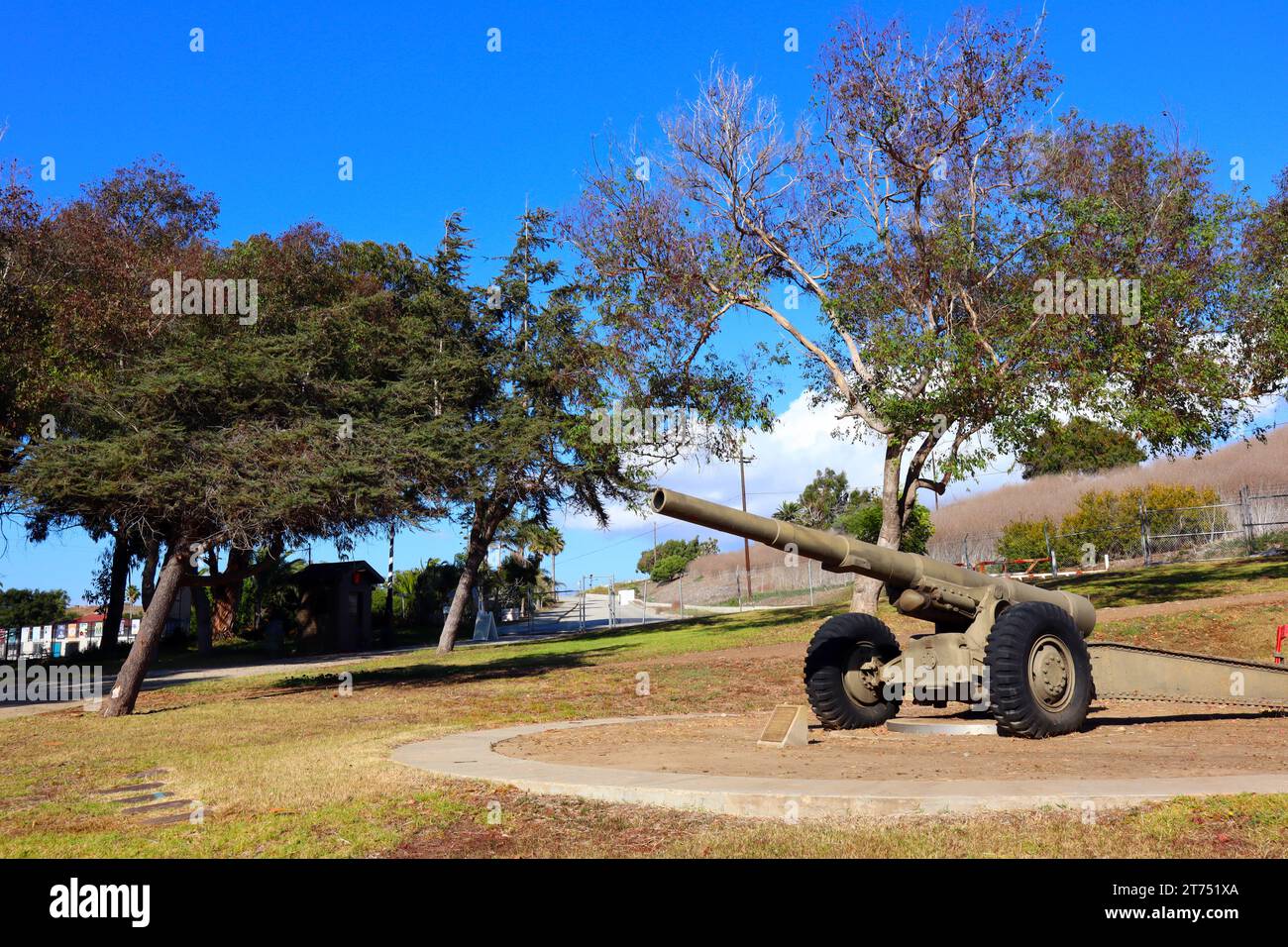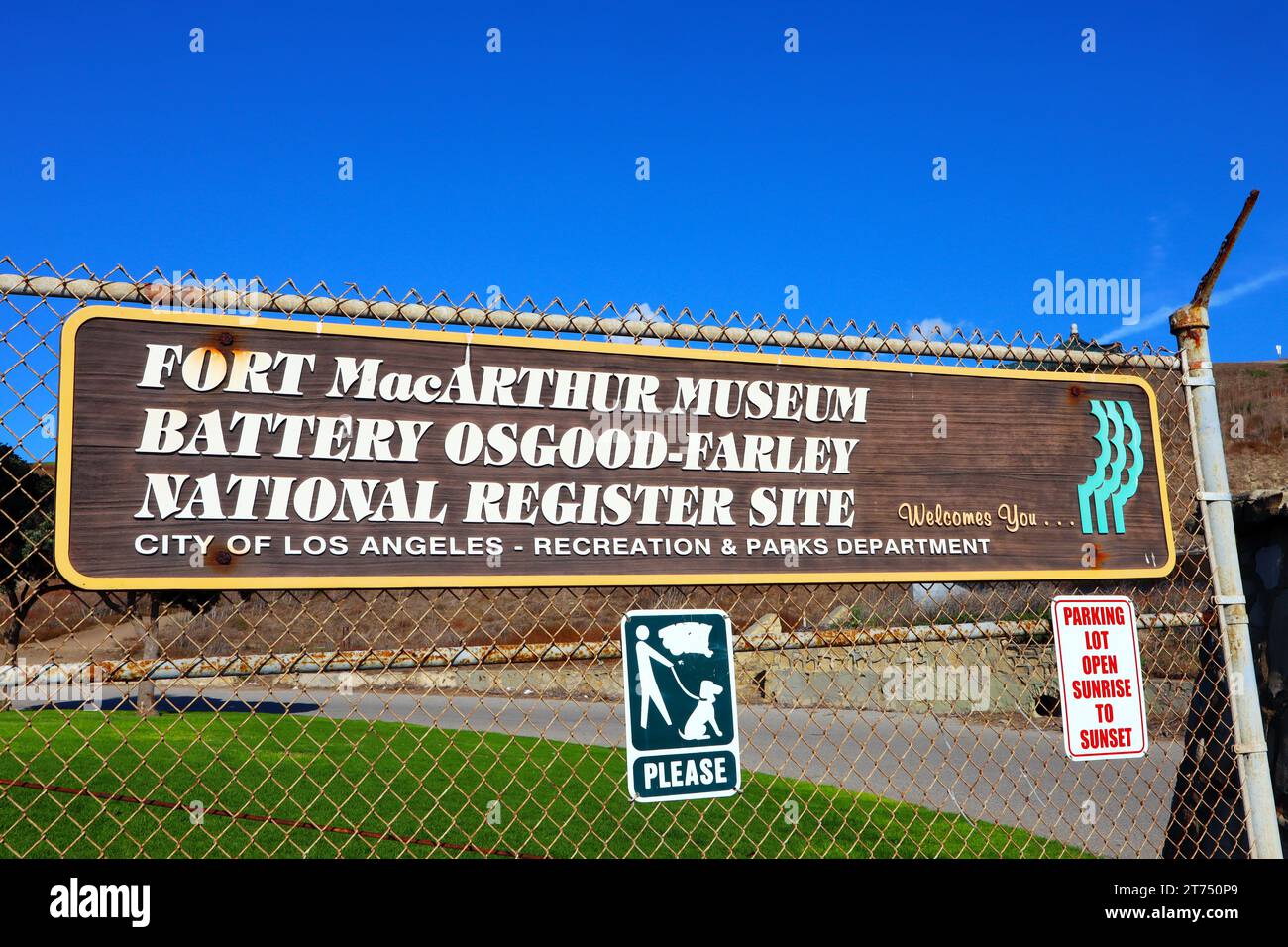
Sentinel of the Pacific: Fort MacArthur’s Enduring Legacy on California’s Coast
High atop the bluffs overlooking the vast expanse of the Pacific Ocean, where the city of Los Angeles meets the sea, stands a silent testament to a bygone era of coastal defense. Fort MacArthur, once a formidable bulwark against naval invasion and a critical player in the Cold War’s nuclear standoff, now serves a quieter purpose. Its sprawling grounds in San Pedro, California, bear the echoes of a century of vigilance, transformation, and eventual peace, inviting visitors to ponder the ever-changing face of warfare and the enduring spirit of those who stood guard.
From its strategic perch, Fort MacArthur commands panoramic views that stretch from the bustling Port of Los Angeles to the distant Catalina Island. This isn’t merely a picturesque locale; it was, for decades, the very eyes and ears of American defense on the West Coast, a crucial piece in the nation’s protective shield. Its story is a microcosm of American military history, evolving from the era of heavy artillery to the age of guided missiles, before finally transitioning into a cherished public space.
Birth of a Fortress: The Endicott Era and Beyond

The genesis of Fort MacArthur lies in the strategic anxieties of the late 19th century. Following the Spanish-American War, the United States recognized the urgent need to fortify its coastlines against potential naval attacks. The Endicott Board, established in 1885, recommended a comprehensive system of modern coastal defenses, marking a departure from outdated masonry forts. Los Angeles, with its burgeoning port and strategic importance, was a prime candidate for such protection.
Construction on what would become Fort MacArthur began in 1914, just as the drums of World War I were sounding in Europe. The fort was officially named in 1917, honoring Lieutenant General Arthur MacArthur Jr., a decorated Civil War veteran and father of the legendary General Douglas MacArthur. This familial connection adds a fascinating layer to the fort’s narrative, linking it directly to one of America’s most prominent military dynasties.
Initially, the fort was equipped with a variety of artillery pieces, including the iconic disappearing carriages – massive guns that would rise above concrete emplacements to fire, then retract out of sight for reloading, offering protection from enemy counter-fire. These engineering marvels, though ultimately made obsolete by advancements in aerial warfare, represented the cutting edge of coastal defense technology at the time. Batteries like Battery Leary and Battery Barlow, armed with 14-inch guns, formed the backbone of this early defense. Their primary mission was to protect the Los Angeles Harbor, a vital economic and logistical hub, from any hostile naval force.
World War II: The Fort’s Zenith
Fort MacArthur reached the zenith of its operational importance during World War II. With the attack on Pearl Harbor in December 1941, the threat of Japanese invasion along the West Coast became terrifyingly real. Suddenly, the fort was thrust into the forefront of national defense. Its garrisons swelled, encompassing thousands of soldiers, and its armament was significantly upgraded.
The most formidable additions were the 16-inch "Big Guns" of Battery Osgood-Farley. These monstrous weapons, each weighing over 300,000 pounds and capable of firing a 2,100-pound projectile over 25 miles, were a truly imposing sight. Designed to pierce the thick armor of battleships, they were the ultimate deterrent, creating a defensive umbrella that extended far out into the Pacific. While these massive guns thankfully never fired in anger at an enemy vessel, their very presence was a powerful psychological and strategic factor.
Beyond the heavy artillery, Fort MacArthur was also a crucial hub for anti-aircraft defenses, radar installations, and a vast network of observation posts. The air above Los Angeles was constantly monitored, and the skies were often filled with the roar of training exercises. The fort essentially became a self-contained city, complete with barracks, hospitals, mess halls, and recreational facilities, bustling with the activity of soldiers preparing for the unknown.
One of the most dramatic, albeit mysterious, incidents in the fort’s history occurred in February 1942, just months after Pearl Harbor. Known as the "Battle of Los Angeles" or the "Great Los Angeles Air Raid," the incident saw a flurry of anti-aircraft fire light up the night sky over the city. While the guns of Fort MacArthur were primarily coastal defense and not directly involved in firing, the fort’s command center would have been a hive of activity, coordinating with other defenses. Amidst the chaos, searchlights scanned the darkness, and rumors of enemy aircraft swirled. Though later largely debunked as a case of "war nerves" and misidentified weather balloons, the event underscored the palpable fear and hyper-vigilance that gripped the West Coast during the war, and Fort MacArthur stood as the first line of defense against such perceived threats.

The Cold War and a Shifting Paradigm
As World War II concluded and the Cold War began, the nature of warfare underwent a radical transformation. The advent of long-range bombers and, more significantly, intercontinental ballistic missiles rendered traditional coastal artillery largely obsolete. The threat was no longer coming from the sea in the form of battleships but from the skies.
Fort MacArthur adapted, reflecting this paradigm shift. In the 1950s, the fort became a key site in the Nike missile defense system, a network of surface-to-air missile batteries designed to protect metropolitan areas from Soviet bomber attacks. Nike site LA-04, located within Fort MacArthur’s Upper Reservation, housed these advanced missile systems, representing a new frontier in air defense. The big guns, once the fort’s pride, were gradually dismantled and scrapped, their colossal concrete emplacements left as silent monuments to an earlier age.
In 1982, the U.S. Army officially transferred Fort MacArthur to the U.S. Air Force, and it was redesignated as Fort MacArthur Air Force Base. Its role further evolved, becoming primarily an administrative and housing facility, though still retaining a strategic importance as a support base for various military operations in the region. The roar of big guns and the rumble of tanks were replaced by the hum of administrative offices and the quiet lives of military families.
Decommissioning and Transformation: A Legacy Reimagined
The inevitable march of military consolidation and budget cuts eventually led to Fort MacArthur’s decommissioning. In 1987, the Air Force significantly reduced its presence, and by the early 1990s, the fort’s active military role had largely ceased. The question then arose: what would become of this historic and strategically located property?
Fortunately, the community of San Pedro, along with dedicated preservationists, recognized the immense value of Fort MacArthur’s legacy. Rather than falling into disrepair or being completely redeveloped, much of the fort was thoughtfully repurposed, allowing its history to be preserved while serving new public functions.
Today, Fort MacArthur is a vibrant tapestry of historical preservation, public parkland, and community resources. The Lower Reservation, once home to the giant Battery Osgood-Farley, has been transformed into Angels Gate Park, a beloved public space renowned for its breathtaking views and the iconic Korean Friendship Bell. Gifted by the Republic of Korea in 1976 to celebrate the U.S. bicentennial and honor Korean War veterans, the intricately decorated bell is a symbol of peace and friendship, drawing visitors from around the globe.
The Fort MacArthur Museum, located in the historic Battery Osgood-Farley, stands as the heart of the fort’s historical preservation efforts. Run by dedicated volunteers and staff, the museum offers a fascinating journey through the fort’s history, showcasing its evolution from a coastal defense outpost to a Cold War missile site. Visitors can explore bunkers, see historical artifacts, and learn about the lives of the soldiers who served there. "It’s more than just a collection of artifacts," says Stephen Nelson, a long-time volunteer at the museum. "It’s a tangible link to a time when our nation truly believed it needed these defenses. Walking through these bunkers, you can almost hear the echoes of the past, the urgency, the vigilance."
Other parts of the former fort now serve as military family housing, youth facilities, and administrative offices for various government agencies. The transformation is a testament to adaptive reuse, allowing the fort’s infrastructure to continue serving the community while honoring its profound historical significance.
An Enduring Sentinel
Fort MacArthur’s story is one of constant evolution, from a bastion of steel and concrete designed to repel invaders to a tranquil parkland where children play and visitors contemplate the horizon. It stands as a powerful reminder of America’s defensive posture through two world wars and the Cold War, reflecting the changing nature of threats and the ingenuity of military engineering.
As the sun sets over the Pacific, casting long shadows across the old gun emplacements and the serene Angels Gate Park, Fort MacArthur whispers tales of vigilance, sacrifice, and the relentless march of time. It remains, in its own way, a sentinel – not of military might, but of history, remembrance, and the enduring human quest for peace and security. Its legacy is etched into the landscape, inviting all who visit to connect with a vital chapter in California’s, and America’s, past.


